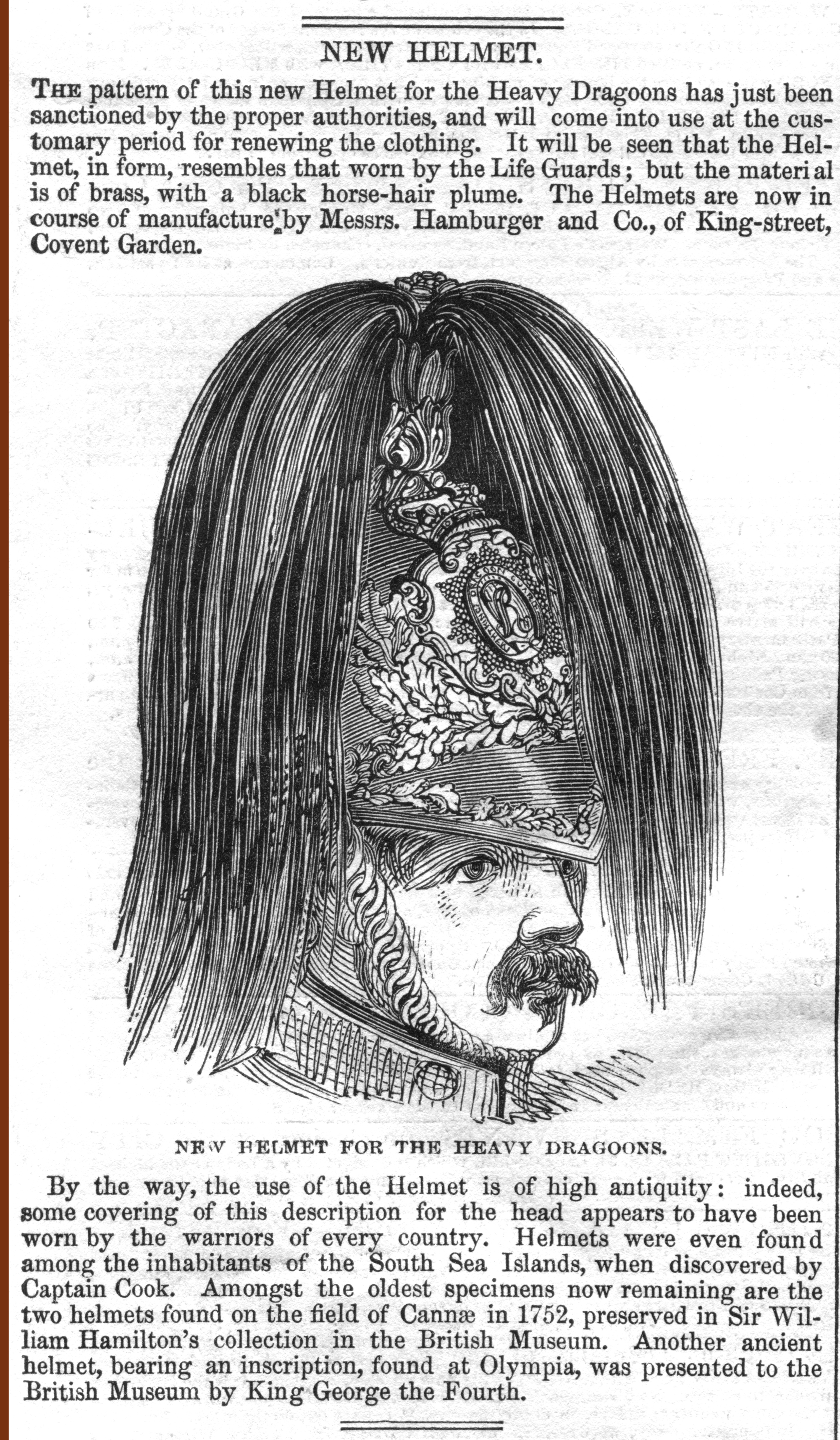One of the great mysteries regarding the origin of the classical “colonial pattern” sun helmet is how it obtained its distinctive shape, one that was truly of Anglo-Indian origin, but which was copied throughout the world.
It is quite likely that the shape has much to do with that of the cavalry helmets of the era, in particular the 1847 pattern Heavy Dragoon Helmet. A close examination of these helmets shows that the shape of the cavalry helmet certainly can be seen in the later Home Service Helmet, the blue cloth helmets of the infantry.
British military doctrine evolved after the Crimean War so that the heavy cavalry helmets became a fixture of the parade grounds, much in the same way that the Home Service Helmet was in fact one for use in Great Britain, while the Foreign Service Helmet was used throughout the empire. No doubt experiences in India during the mutiny and the early campaigns in Africa made it clear that the headdress that looked good on parade in the U.K. would be far from ideal in the far flung empire
From this article in the Illustrated London News of October 23, 1847 we can see that helmets were a fixture of armies from antiquity.
Here I should add a correction by the ILN in their next edition –
THE NEW HELMET. – The new-pattern helmet recently approved of for Heavy Dragoons, of which we give an Engraving in our last number, and which we omitted by accident to state was invented by Messrs. Hawkes, Moseley & Co., of Piccadilly (who have the orders for the immediate manufacture of them), is, although very handsome in its general appearance, chiefly remarkable for the scientific principle upon which it is constructed. Hitherto, what was pretty to the eye, and too often what was not so, has been capriciously adopted; but, in this case, the inventors have succeeded in making a helmet that , when on the head, should be not only not unsightly, but so perfectly balanced that no inconvenience if felt by the wearer when on a fiery charger; and in some cases, when it has been subjected to a severe trial, not one touch of the hand has been needed to keep it in position. The weight is considerably less than that of former helmets, which is no small advantage. The adoption of this helmet is, we believe, mainly due to the good taste of that highly-esteemed officer, his Royal Highness Prince George of Cambridge, now commanding the Dublin garrison, who, seeing the inconvenience of the helmets at present in use, has successfully used his influence in effecting this change. The Prince has likewise very recently effected an important change in the cap of the 17th Lancers, of which his Royal Highness is Colonel.
The Illustrated London News 30th October 1847
What I posit is that the British, in particular, followed the lines of these helmets into the realm of sun-helmets to the 19th Century, and most often associated with the Indian Raj. The front peak and the rear brim are quite similar –
An example of this is this a 2nd Boer War helmet–
 The “progression” is illustrated here, although the cavalry helmet is of the 1871 pattern, 3rd Dragoon Guards, which was a simplified version of the 1847 pattern.
The “progression” is illustrated here, although the cavalry helmet is of the 1871 pattern, 3rd Dragoon Guards, which was a simplified version of the 1847 pattern.

The profile of an 1871 Pattern Dragoon Helmet, a Foreign Service Helmet and a Home Service Helmet. Note the similar shape of all three helmets.



As always a very informative and well written article.
Regards
Brian
Great article. I have always held the same belief in the origins of both the British home service and foreign service helmets in spite of the too many to mention references that these helmets were derived from the German “pickelhaube”. The similarity in shape and proportions shared by the dragoon helmets and the home and foreign service types is simply too strong to ignore.
Do you know the origins of John Ellwood (1775 – 1835) the founder of Ellwood Hat Manufacturers and maker of the air chamber helmet?